Pleasure Boats & Vessels of Clacton-on-Sea, 1871-1971
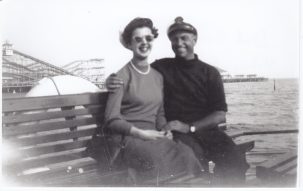
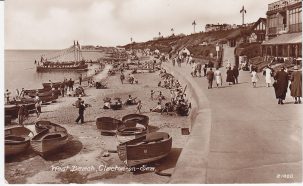
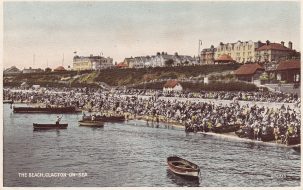
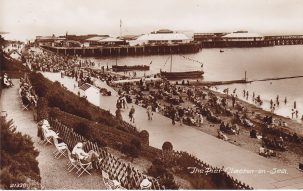
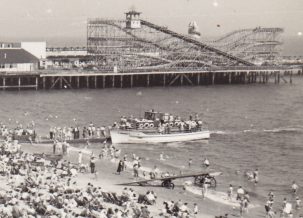
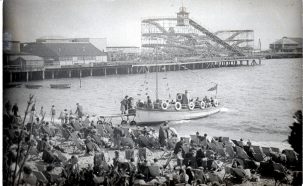
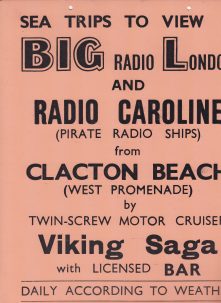
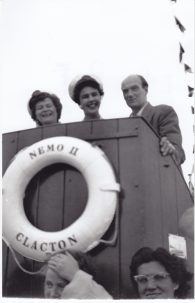
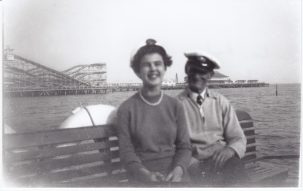
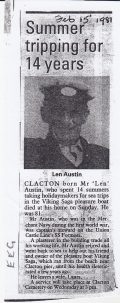
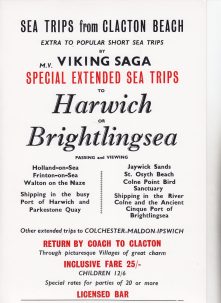
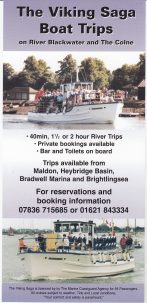
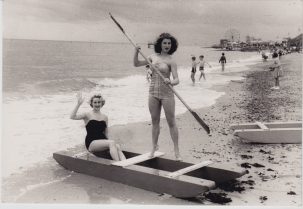
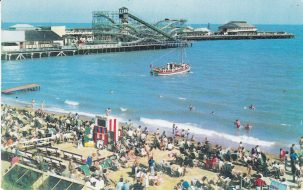
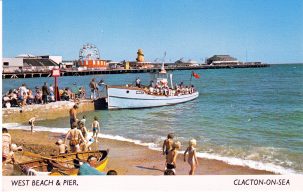
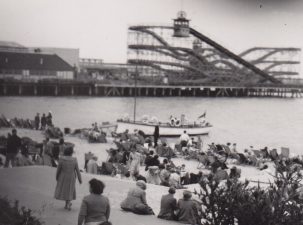

The pleasure boats and vessels associated with Clacton-on-Sea, 1871 – 1971: From Great Clacton to Clacton on Sea.
The ancient parish of Great Clacton was to be transformed during July 1871 when the paddle steamer The Queen of the Orwell arrived at the newly constructed Landing Stage and which later developed to become Clacton Pier, Number One North Sea, and the new seaside resort of Clacton on Sea was now initiated.
A seaside resort is an apt name with its proximity to the sea, shore and the cliff top, and this makes the focus for holidaymakers who visit. It was Peter Bruff, an entrepreneur and civil engineer, who with the purchase of Seaside House Farm close to the cliffs within Great Clacton parish, thus began the development of the new holiday resort over the field of the former farm.
One of the aspects of this new resort was the provision of a means to travel on the sea. One being a means of travel to a destination, and secondly the provision of short local trips from the beach or the pier. A brief overview of the types of vessels used to carry out the two roles of the pleasure boats at Clacton on Sea follows.
The types of craft to be seen at Clacton from 1871 until 2000 can be grouped into the following categories:
Paddle steamers, rowing boats, sailing boats, motor boats, motor vessels.
Paddle Steamers
The paddle steamer can probably claim to be the longest serving type of vessel carrying visitors to and from Clacton. It was a paddle steamer, the Queen of the Orwell, which during July 1871 visited the newly constructed landing stage and thus initiated the new resort of Clacton-on- Sea. The paddle steamers spanned some ninety years of visiting Clacton, and were the main means of conveying both holidaymakers and day-trippers to the growing resort before the influence of the railway coming to the town in 1882, and later the charabancs as the alternative means of transport increased. There were numerous numbers of paddle steamers over the decades and companies operating them, the Belle steamers being prominent, one of which was the Clacton Belle.
Rowing Boats
The local boatmen hired out or rowed holiday makers close along the shore. This took place during the summer season from off the beach either side of the pier. At the end of the day these boats were moored overnight just offshore, or sometimes were hauled up to the sea wall for protection. From the late 19th century until the late 1930s was the heyday for the beach rowing boats.
Sailing boats
Sailing boats like the local fishing boats called smacks, gave a pleasantly relaxing sail from a small landing platform approached by steps from near the Pier Pavilion towards the end of the pier. There was such a platform either side of the pier, the wind direction dictating which platform was suitable. Carrying just a few passengers per trip, it was mainly the period up to the 1910s when such sailing trips took place. Motor boats then took their place.
Motor boats.
Wooden open motor boats with a capacity of some fifty persons then began to provide trips from the pier landing platforms, one of these was believed to be the white hulled, The Jill. Working off the West Beach between the two world wars there were three similar boats, each with a single short mast forward from which bunting was strung. These boats operated from the most popular beach’s for the holidaymakers.
Within this type was the speed boat. During the 1950s The Girl Susan operated from the landing platforms on the pier. This highly varnished boat carried up to eight people and gave a thrilling but often wet ride from spray to those fun seekers.
Perhaps two of the most remembered motor boats of the post world war two era for Clactonians and visitors alike were the blue hulled Nemo 11 and the larger white hulled Viking Saga.
Operating from the groyne on the West Beach, or from movable inclined ramps depending on the state of the tide these two boats carried huge numbers of holidaymakers for trips along the coast towards Jaywick and back, and working continuously through the day, during the peak summer weeks of that golden era of the 1950s and into the 1970s.
The Commodore a converted ex naval Motor Torpedo Boat, worked from the pier berthing arm in the 1950s for a few seasons.
Motor Vessels
The late 1930s saw a much larger vessel visiting Clacton Pier and the new berthing arm. This was the twin funnelled, although one was a dummy, Queen of the Channel. A fine looking sea-going boat, but sadly she was lost during the evacuation of allied troops from the Dunkirk beaches in 1940.
Following the end of the Second World War a new twin screw Queen of the Channel was built, and could carry over 1,300 passengers and came into service in 1949. This vessel had just one funnel and its gross weight was 1,472 tons. It became well known for its weekly Thursday, ‘no passbook’ trips to Calais which allowed a three hours ashore. This vessel visited Clacton daily.
Conclusion
The different types of boats operating from the beaches or Clacton Pier, and those daily visitors from Tower Pier on the River Thames, were an integral part of the seaside holiday and still fondly remembered by countless numbers of British people who annually chose Clacton-on-Sea for their summer holiday.
A blue coloured plaque fixed to one of the retaining walls of a slope leading to the lower promenade from the cliff-top records the work of the Clacton boatmen working from the beach.
Click here for our wonderful Photo Gallery of Leisure Boats Across Tendring Coast.
SOURCE: From primary and secondary sources in the Roger Kennell Archive.R K Sept.-Nov. 2017







No Comments
Add a comment about this page